Have you ever excitedly made frozen yogurt bites, only to end up with something rock-hard and icy? You’re not alone. It’s a common issue that frustrates many home cooks. The good news is, the solution doesn’t require special equipment or complicated ingredients. It all comes down to a few simple techniques that transform grainy or icy yogurt into smooth, creamy perfection. In this guide, you’ll learn five proven ways to make creamy frozen yogurt bites that taste as good as they look. Once you master these tips, every batch will come out soft, silky, and scoopable.
Table of Contents
Table of Contents
Quick Tips Summary Box
- Use Full-Fat Yogurt: Fat is your friend for a soft texture.
- Add Liquid Sweetener: Honey or maple syrup prevents hard ice crystals.
- Mix in a Stabilizer: A spoonful of cream cheese or nut butter adds creaminess.
- Whip the Base: Incorporate air for a lighter, less dense bite.
- Freeze Fast & Cold: Quick freezing means smaller, smoother ice crystals.
Use the Right Foundation (It’s All About the Fat)
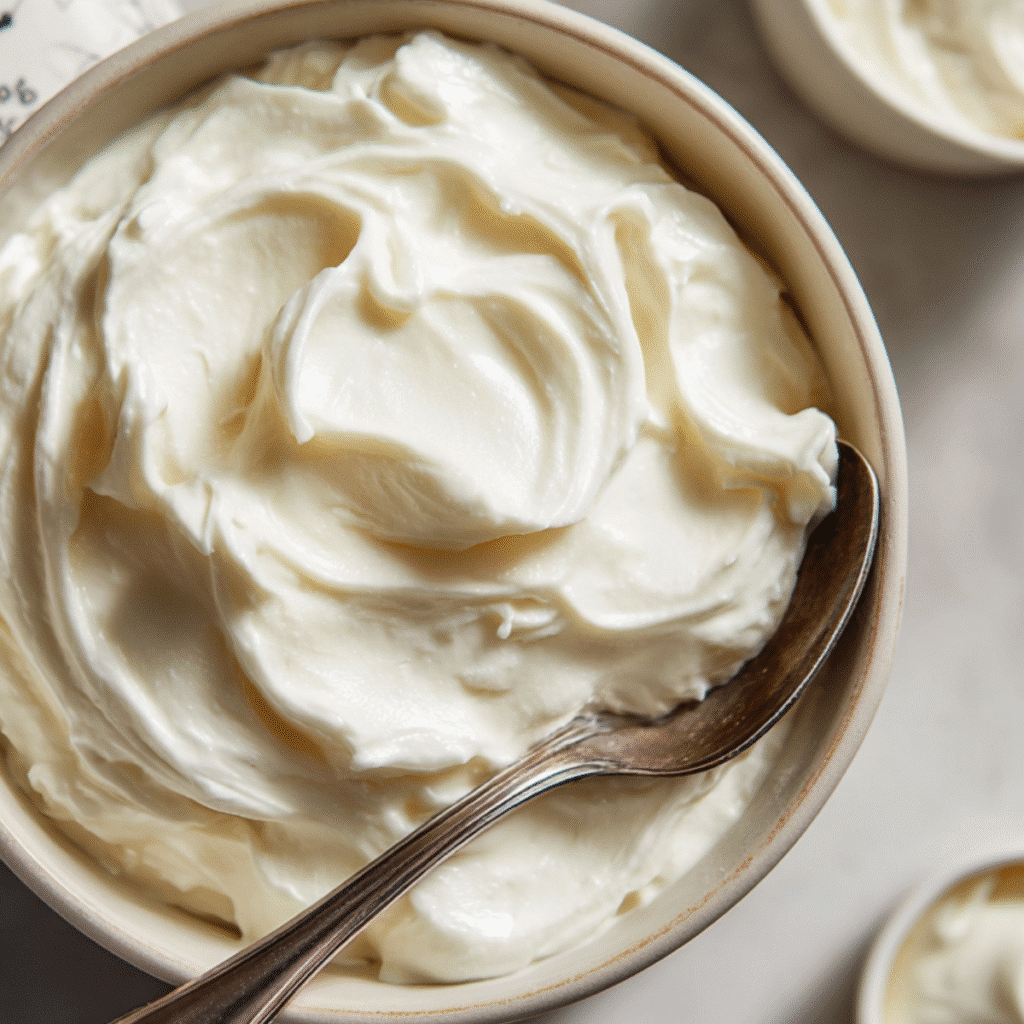
The secret to creamy frozen yogurt bites starts with your base. If you’ve been using non-fat or low-fat yogurt, that might be the root of your texture troubles. Here’s why.
The Science:
Fat freezes differently from water. While water becomes rigid and forms large, sharp crystals, fat remains pliable in the cold. This flexibility interrupts crystal growth, keeping the texture silky. A higher fat content in your yogurt means fewer jagged crystals and a consistently creamier bite.
The Action:
Always choose full-fat Greek yogurt. Its thick texture and high fat content create a soft, smooth bite that feels indulgent without being heavy. For dairy-free alternatives, look for full-fat coconut yogurt, which performs just as well thanks to its natural creaminess.
If you’re unsure what to buy, check the label. You want at least 5% milk fat for dairy yogurt. Avoid anything labeled “non-fat” or “low-fat” if your goal is creaminess.
Real Example:
The thick, velvety texture of full-fat yogurt is exactly why my Lemon Raspberry Frozen Yogurt Bites turn out so smooth. That recipe wouldn’t work half as well with a thin or watery base.
Sweeten for Structure, Not Just for Taste
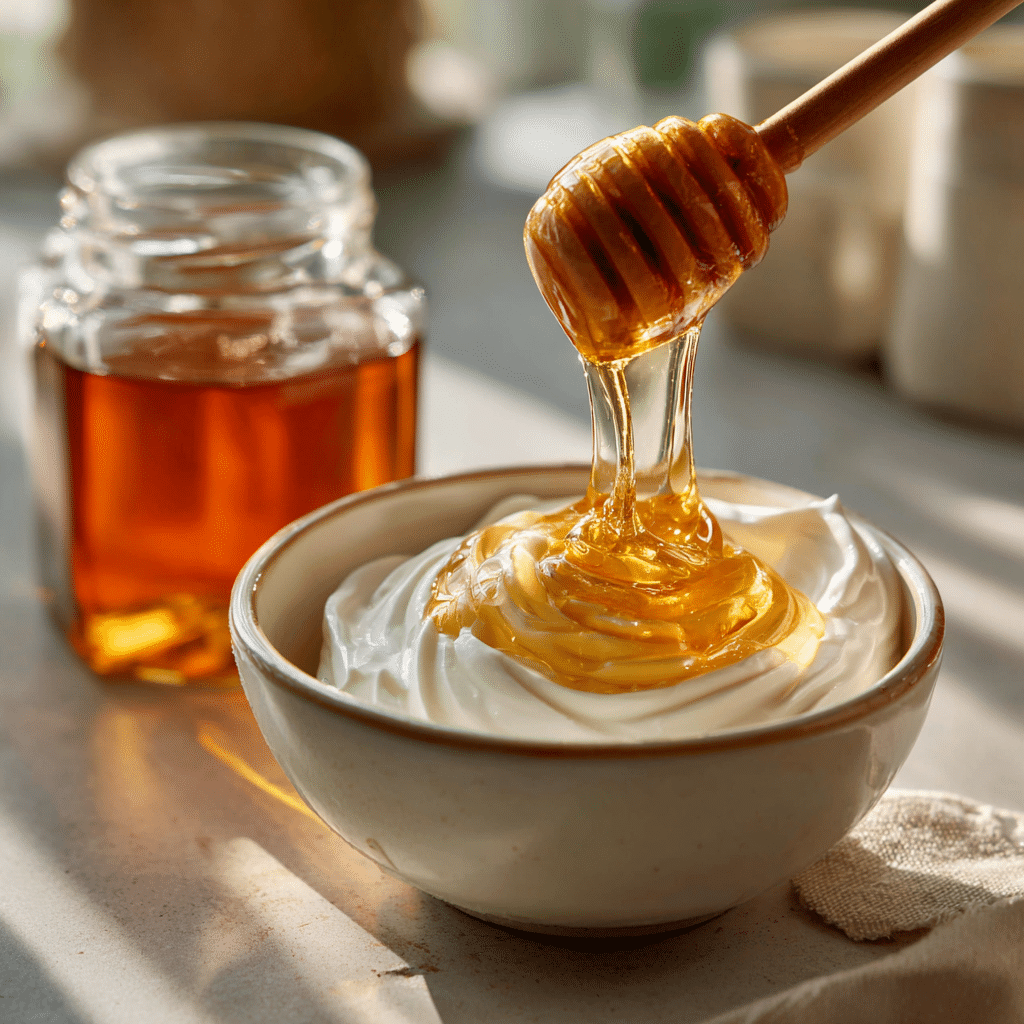
Sweetness does more than please your palate. It plays a crucial role in transforming frozen yogurt from icy to creamy. If you’ve been skipping the sweetener to keep things “healthy,” you might be sacrificing texture without realizing it.
The Science:
Sugar changes the chemistry of freezing by lowering the mixture’s freezing point. This makes it harder for large crystals to form, so the yogurt sets with a smooth, gentle texture instead of becoming solid and icy. Even a small amount of sugar makes a big difference in creaminess.
The Action:
Add a liquid sweetener like honey, maple syrup, or agave. These not only blend easily but also help create a smoother mouthfeel. Even a tablespoon per cup of yogurt can make a noticeable difference in texture. If you’re concerned about added sugar, remember that the amount per bite is very small.
Bonus tip: Taste your base before freezing. It should be slightly sweeter than you want the final product, since cold dulls sweetness.
Helpful Reference:
This tip pairs perfectly with the natural tartness of lemon in my Lemon Raspberry Frozen Yogurt Bites. The honey balances the flavor and keeps the texture velvety.
Add a Natural Stabilizer
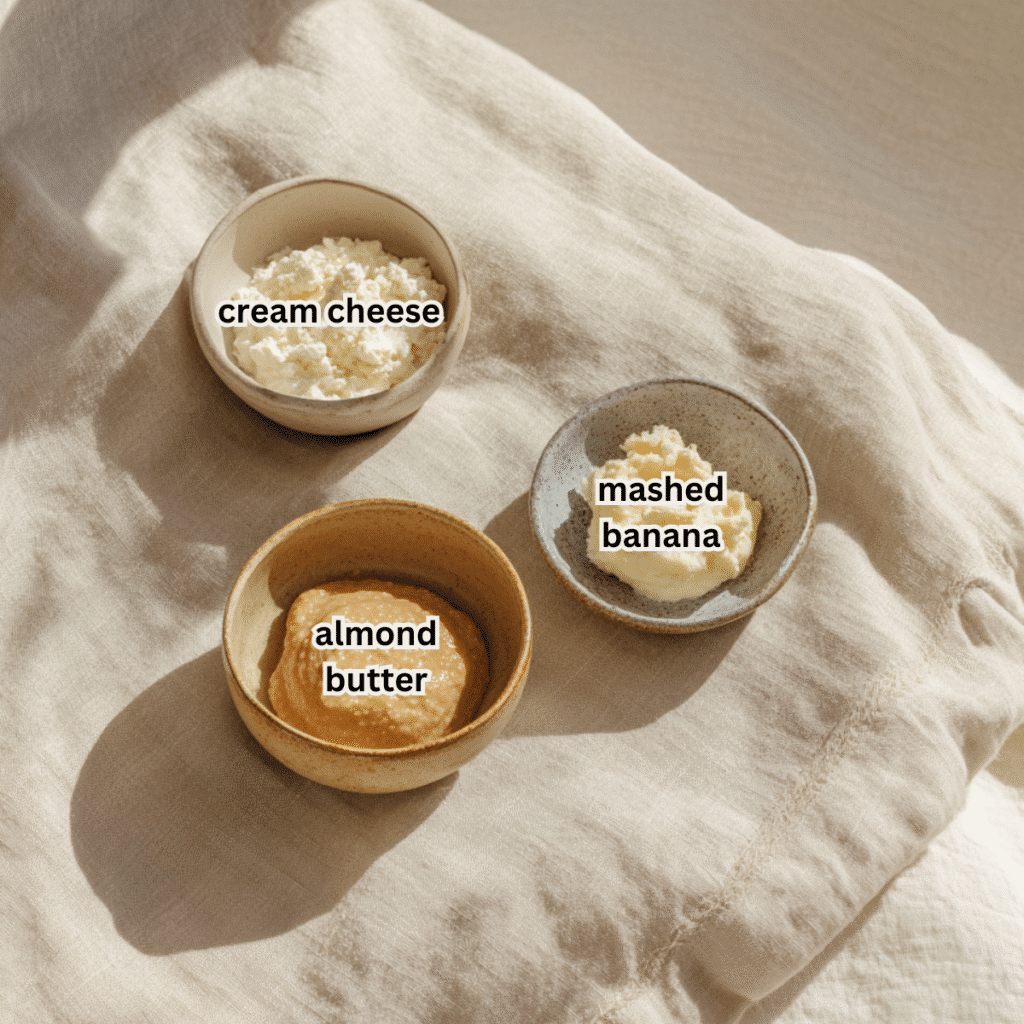
If you want frozen yogurt bites that stay soft and creamy straight from the freezer, this tip is a game-changer. Even with full-fat yogurt and sweetener, a stabilizer can take your texture from good to professional.
The Science:
Stabilizers reduce the amount of free water in the mixture, which slows down ice crystal formation and helps maintain a smooth texture. They also add body and creaminess, giving your bites a luxurious feel that’s usually missing in homemade versions.
The Action:
Blend one of these natural ingredients into your yogurt before freezing:
- Cream cheese (1 tablespoon per cup): Adds richness and a cheesecake-like mouthfeel.
- Nut butter (1 tablespoon per cup): Cashew or almond butter adds healthy fats and a buttery texture.
- Ripe banana (about ¼ mashed per cup): Offers natural sweetness and a creamy, sorbet-style consistency.
Each of these options enhances not only texture but also flavor. Choose based on the taste profile you’re going for.
Pro tip: For fruit-based bites like my Lemon Raspberry Frozen Yogurt Bites, cream cheese adds a subtle tang that complements citrus beautifully.
Whip It Good (Incorporate Air)
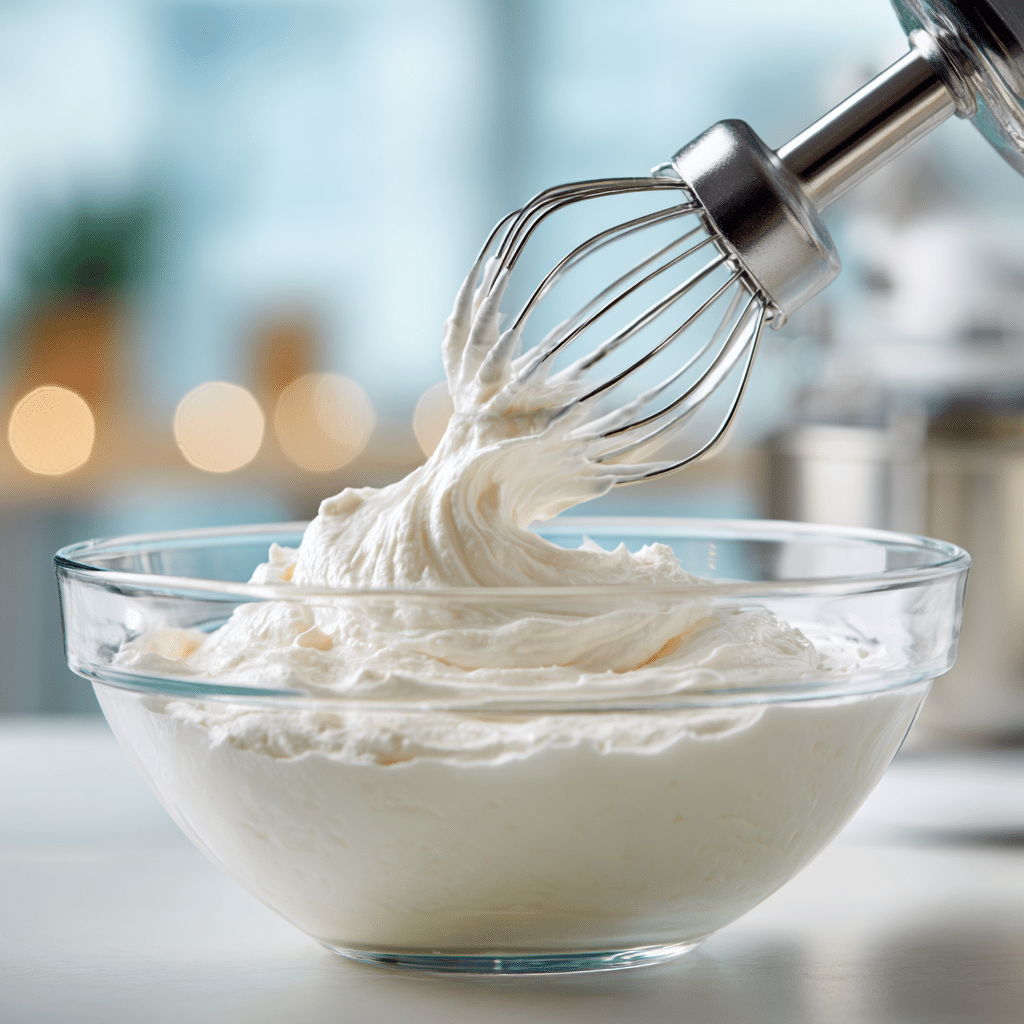
You might not think of air as an ingredient, but it’s a key part of achieving that soft, creamy texture you expect from frozen treats. This simple trick makes a huge difference, yet most recipes skip it entirely.
The Science:
The difference between a solid ice cube and creamy ice cream? Air. Incorporating air into your yogurt mixture lightens the texture and reduces density. Less density means fewer compact ice crystals and a smoother bite that’s easy on your teeth.
The Action:
Before portioning your yogurt into molds, whip the mixture using a hand mixer, stand mixer, or even a strong whisk. Mix vigorously for about 60 seconds until the yogurt becomes visibly lighter and slightly fluffy. You’re not trying to make whipped cream, just aerate the base enough to break up thickness and trap tiny bubbles.
This step takes less than a minute but creates a noticeable improvement in texture.
Want proof it works?
I use this exact method in test batches of my Lemon Raspberry Frozen Yogurt Bites, and the difference in softness is immediate.
Freeze Fast and Cold
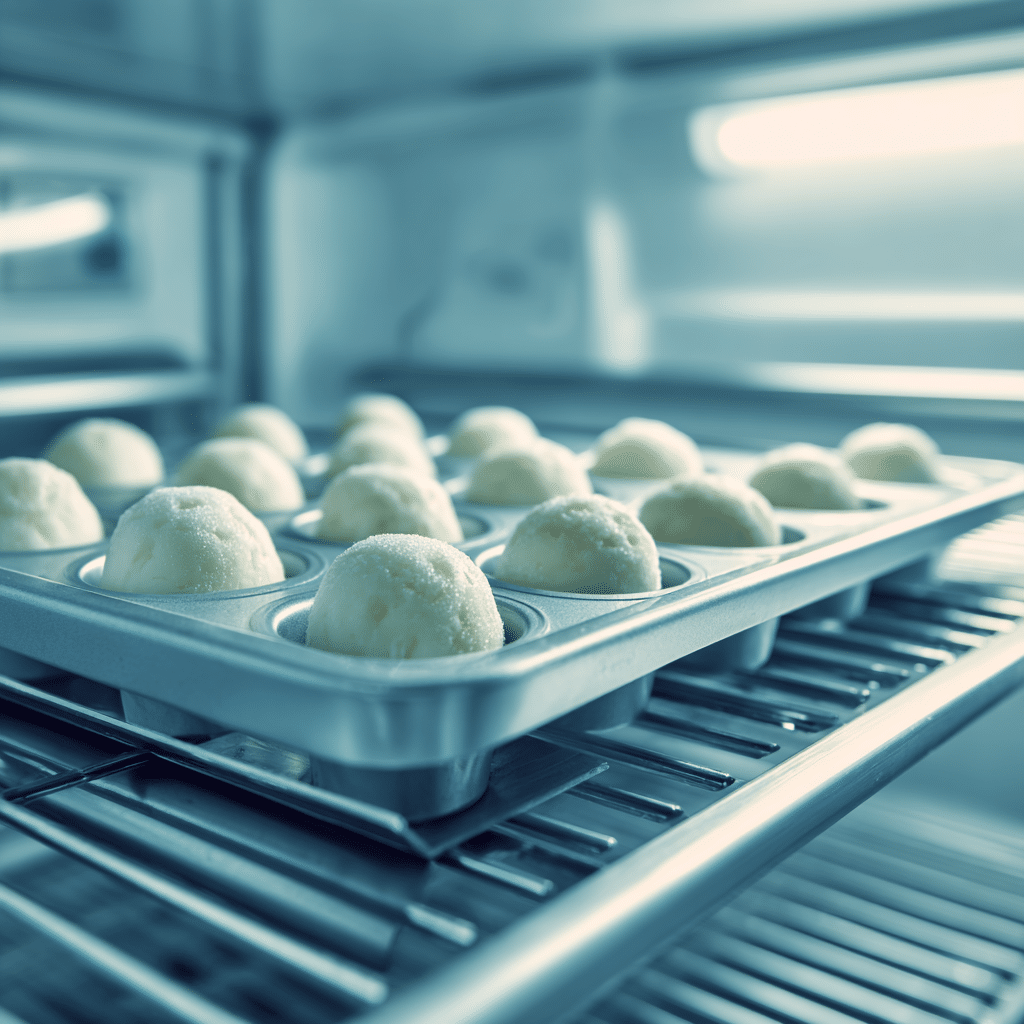
The final key to creamy frozen yogurt bites isn’t an ingredient, it’s a technique. How quickly your bites freeze affects their texture just as much as what goes into them.
The Science:
Slow freezing gives ice crystals time to grow large. These large crystals make your bites crunchy and icy. Quick freezing, on the other hand, keeps crystals small, resulting in a smooth, creamy feel when you bite into them.
The Action:
Pour your whipped yogurt mixture into silicone molds, then place the molds on a metal baking sheet. Metal conducts cold efficiently, helping the yogurt chill faster. Slide the tray into the coldest part of your freezer, usually the back of the bottom shelf, and keep the door closed until they’re completely frozen.
Avoid stacking anything on top or opening the freezer during the first few hours. Every temperature fluctuation can affect how the bites set.
Pro Tip:
If you’re following my Lemon Raspberry Frozen Yogurt Bites recipe, this method helps lock in that bright, tangy flavor without turning the bites into ice cubes.
FAQs About Frozen Yogurt Bites
Why are my frozen yogurt bites so hard?
Hard frozen yogurt bites usually come from using low-fat yogurt, skipping the sweetener, or freezing them too slowly. All of these lead to large ice crystals that create a hard, icy texture. Using full-fat yogurt, a bit of liquid sweetener, and fast freezing techniques can fix this easily.
How do you keep frozen yogurt from getting icy?
To prevent iciness, use full-fat Greek yogurt and a touch of honey or maple syrup. These both help control ice crystal formation. Adding a stabilizer like cream cheese or nut butter can also create a smoother, more scoopable texture.
Can I use non-fat yogurt for frozen yogurt bites?
You can, but the texture won’t be creamy. Non-fat yogurt contains more water and less fat, which leads to a harder, icier bite. For the creamiest results, full-fat Greek yogurt is highly recommended. It makes all the difference in mouthfeel and flavor.
Conclusion:
Most frozen yogurt bites fall short because they skip the details that truly matter. Now you know better. By using full-fat yogurt, adding a little sweetener, mixing in a natural stabilizer, whipping your base, and freezing it fast, you can turn an ordinary recipe into something exceptional.
These tips don’t require any fancy tools or special ingredients—just a bit of intention and technique.
You now have the complete blueprint to banish icy bites forever. By mastering these five simple techniques, you can create perfectly creamy frozen yogurt treats every single time.
Ready to put your new skills to the test? The best way to experience the difference is to try it yourself.
Click here to make my fan-favorite Lemon Raspberry Frozen Yogurt Bites, it’s the perfect recipe to practice these creamy techniques on! Make sure to follow me on Facebook and Pinterest





